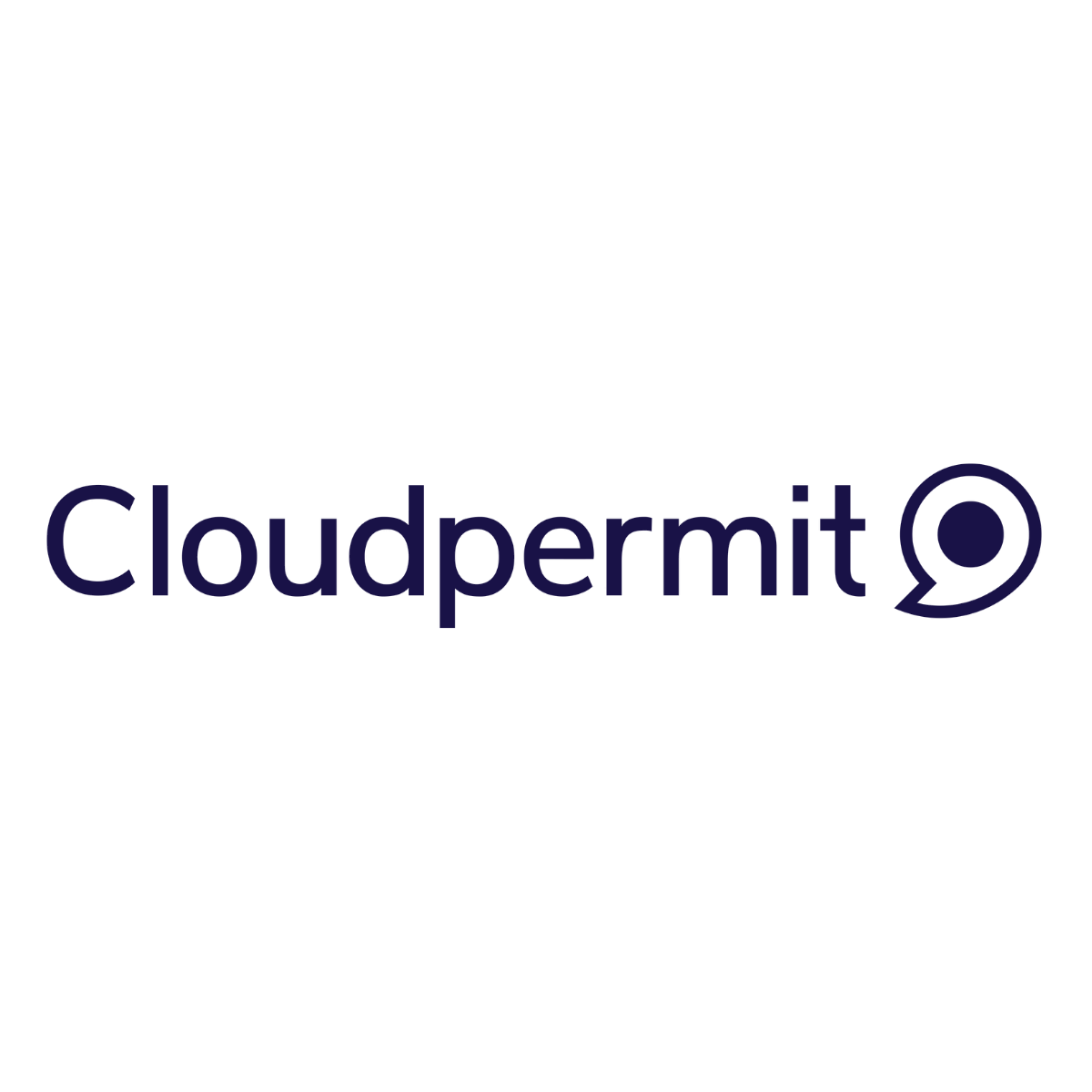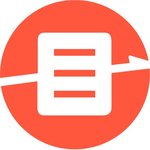Description

Cloudpermit

NextRequest
Comprehensive Overview: Cloudpermit vs NextRequest
Cloudpermit Overview
a) Primary Functions and Target Markets
Primary Functions: Cloudpermit is an online software solution designed to streamline the building permit process for government agencies, municipalities, and developers. Its key functions include:
- Permit application submission and management.
- Online plan review and inspection scheduling.
- Communication between stakeholders like applicants, reviewers, and inspectors.
- Document storage and management.
Target Markets: Cloudpermit primarily targets local government agencies, municipalities, and planning departments that require efficient digital solutions to manage building permits, zoning, and inspections.
b) Market Share and User Base
While specific market share data for Cloudpermit is not typically disclosed, the platform has been gaining traction in North America and Europe by appealing to jurisdictions that prefer cloud-based solutions for permit management. Its user base consists mainly of municipal employees, planners, developers, and contractors involved in the permitting process.
c) Key Differentiating Factors
- Cloud-Based: Cloudpermit is entirely cloud-based, which facilitates easy access and management from any location.
- User-Friendly Interface: Known for its intuitive interface, making adoption easier for municipalities transitioning from paper-based systems.
- Straightforward Pricing: Offers transparent pricing models with no hidden costs, which is appealing to government agencies.
- Integration Capabilities: Can integrate with GIS systems and other municipal software, enhancing its functionality.
NextRequest Overview
a) Primary Functions and Target Markets
Primary Functions: NextRequest is a FOIA (Freedom of Information Act) and public records request management system. Its key functions include:
- Managing and tracking public records requests.
- Automating workflows associated with the fulfillment of records requests.
- Providing a portal for the public to submit requests and track their progress.
Target Markets: NextRequest primarily targets government agencies, including city, county, and state levels, that need to comply with public records laws and manage FOIA requests efficiently.
b) Market Share and User Base
NextRequest has a strong presence in the public records management space, particularly in the U.S., due to the strict public records compliance requirements. Its user base comprises public records officers, clerks, attorneys, and other government staff involved in handling public records requests.
c) Key Differentiating Factors
- Purpose-Built for FOIA Compliance: Specifically designed to manage and simplify the complexities of FOIA and public records requests.
- Security and Compliance: Offers robust security features and compliance with relevant data protection regulations, crucial for handling sensitive information.
- Public Interface: Provides a user-friendly public portal for submitting and tracking requests, increasing transparency.
- Collaboration Features: Facilitates collaboration among internal staff for more efficient processing of requests.
Comparative Analysis
- Focus and Functionality: Cloudpermit specializes in building permit management, whereas NextRequest focuses on public records and FOIA requests. This highlights their distinct roles within government operations.
- Market Reach: Cloudpermit primarily supports municipal building departments, while NextRequest serves a broader range of government departments handling FOIA requests.
- Adoption and Integration: Both platforms emphasize ease of use and integration capabilities, but they cater to different aspects of government operations, resulting in non-overlapping user bases.
- Technology and Deployment: Both are cloud-based, providing flexibility and remote access, but Cloudpermit focuses on building permissions, and NextRequest focuses on public records compliance.
In summary, Cloudpermit and NextRequest are two distinct software solutions serving different needs within government agencies. Each possesses unique features designed to optimize specific processes—permitting for Cloudpermit and records management for NextRequest.
Contact Info

Year founded :
2011
+1 833-253-7376
Not Available
United States
http://www.linkedin.com/company/cloudpermit

Year founded :
Not Available
Not Available
Not Available
Not Available
Not Available
Feature Similarity Breakdown: Cloudpermit, NextRequest
To provide a comprehensive comparison between Cloudpermit and NextRequest, let's break down their core features, user interfaces, and unique offerings:
a) Core Features in Common
-
Permitting and Licensing Management:
- Both Cloudpermit and NextRequest offer robust systems for managing permits and licenses. They are designed to streamline the process of application submission, review, and approval, catering to government agencies and municipalities.
-
Workflow Automation:
- These platforms automate workflows to improve efficiency and reduce manual errors. They allow users to set up custom workflows that guide applications through the necessary steps for approval.
-
Document Management:
- A shared feature includes comprehensive document management systems that facilitate the storage, retrieval, and management of the various forms and documents that accompany permit applications.
-
Online Submissions and Public Access:
- Both platforms enable online submissions, allowing applicants to submit necessary documents and forms electronically. Additionally, they offer public portals where users can track the progress of their applications.
-
Communication Tools:
- They include tools for communication between applicants and reviewers, ensuring that stakeholders are kept informed and can communicate in a centralized manner.
-
Reporting and Analytics:
- Each product provides features to generate reports and analytics, giving administrations insights into permit processes, efficiency metrics, and compliance tracking.
b) User Interface Comparison
-
Cloudpermit:
- Cloudpermit is known for its user-friendly, intuitive interface that is designed with simplicity in mind. The platform often provides a clean, modern layout that's easy to navigate, with dashboards that offer clear visibility into task status and progress. It's designed to be approachable even for users who may not be tech-savvy.
-
NextRequest:
- NextRequest also boasts an interface that is straightforward and clean, though it might be slightly more focused on the organization and categorization required for handling public records and FOIA requests. It's often praised for its clarity and ease of use, aiding users in efficiently managing documents and requests.
c) Unique Features
-
Cloudpermit:
- Mobile-Optimized Access: Cloudpermit emphasizes mobile accessibility, allowing users to manage permit processes from anywhere through their mobile devices. This is particularly beneficial for on-the-go inspections and updates.
- Focus on Building and Zoning Permits: Cloudpermit is particularly strong in managing building and zoning permits, making it especially suitable for municipal planning departments.
-
NextRequest:
- Public Records Request Management: While Cloudpermit focuses on permit processes, NextRequest is distinguished by its capability to handle public records requests, including Freedom of Information Act (FOIA) requests. This feature is crucial for agencies dealing with transparency and public accountability.
- Audit Trails and Compliance Tools: NextRequest provides detailed audit trails and compliance tools designed to manage the life cycle of public records requests, ensuring transparency and adherence to legal requirements.
In summary, while Cloudpermit and NextRequest share several core features related to permit and document management, they cater to slightly different aspects of government administration processes. Cloudpermit shines in building and zoning permit management with excellent mobile integration, while NextRequest stands out for its public records request management and compliance tools.
Features

Not Available

Not Available
Best Fit Use Cases: Cloudpermit, NextRequest
Cloudpermit and NextRequest cater to different needs in the realm of government and public sector services, focusing primarily on digital transformation to enhance efficiency and transparency. Here’s a breakdown of their ideal use cases and how they serve various industry verticals and company sizes:
Cloudpermit
a) Best Fit Use Cases for Cloudpermit
-
Municipal and Local Governments:
Cloudpermit is tailored for municipalities looking to streamline their building permitting processes. It's particularly beneficial for small to medium-sized local governments that need an efficient, user-friendly way to manage permits, inspections, and code enforcement. -
Construction and Development Projects:
Developers and contractors benefit from using Cloudpermit by facilitating smoother interactions with municipal governments. The platform helps in reducing administrative overhead and speeding up the approval process for construction projects. -
Urban Planning Departments:
Departments engaged in urban planning can use Cloudpermit to improve coordination with various stakeholders involved in urban development, ensuring compliance with local regulations and efficient project approvals. -
Governments with Limited IT Resources:
Smaller municipalities or those lacking extensive IT infrastructure will find Cloudpermit beneficial due to its cloud-based nature, which eliminates the need for significant investment in IT infrastructure and maintenance.
NextRequest
b) Preferred Use Cases for NextRequest
-
Public Records Management for Government Agencies:
NextRequest is well-suited for government bodies at the municipal, state, or federal level that handle large volumes of public records requests. It assists in managing, tracking, and fulfilling these requests efficiently, ensuring compliance with transparency laws. -
Law Enforcement Agencies:
Departments like police or sheriff’s offices can use NextRequest to manage public records related to law enforcement activities, such as accident reports or incident logs, ensuring quick and transparent access to the public. -
Educational Institutions:
Public universities and school districts that receive numerous requests for records—such as meeting minutes, financial documents, or policy information—can utilize NextRequest to streamline and automate the process. -
Health Departments:
Agencies dealing with public health data, where records requests can entail sensitive or voluminous information, can effectively use NextRequest to manage requests securely and compliantly.
d) Catering to Different Industry Verticals and Company Sizes
-
Cloudpermit is primarily targeted at the public sector, specifically focusing on local government functions related to permitting and urban development. It caters largely to small to medium-sized municipalities or counties, as it offers scalable solutions that can be tailored to the specific size and regulatory environment of a community.
-
NextRequest serves a broader scope of public sector organizations, including state and federal agencies, educational institutions, and public health departments. It is highly beneficial for larger organizations with substantial public records management needs, ensuring robust processing capabilities that can handle high request volumes across different jurisdictions.
Both platforms aid in increasing transparency and efficiency, but they are differentiated by their primary functionalities and target user bases: Cloudpermit focuses on permitting and urban planning processes, while NextRequest specializes in public records management. Through cloud-based deployment, they both offer scalable solutions that can be adapted for various sizes and complexities of government operations.
Pricing

Pricing Not Available

Pricing Not Available
Metrics History
Metrics History
Comparing teamSize across companies
Conclusion & Final Verdict: Cloudpermit vs NextRequest
To provide a comprehensive conclusion and final verdict on Cloudpermit and NextRequest, it's important to assess each product's value proposition, the advantages and disadvantages of using them, and recommendations for potential users. Here's a detailed breakdown:
a) Which product offers the best overall value?
Cloudpermit:
Cloudpermit is specifically designed for the building permit and planning sector. It provides a comprehensive suite of tools that facilitate digital permit applications, code enforcement, and inspections. Its value lies in its ease of use, efficiency, and ability to streamline permit processes for municipalities and contractors.
NextRequest:
NextRequest is tailored for managing public records requests, offering a robust platform for records management and compliance. It's valuable for government agencies that frequently handle FOIA requests and need to ensure transparency and timely responses.
Best Overall Value:
The best overall value largely depends on the specific needs of the organization. If an organization is a municipality seeking to digitize and streamline its building permit and planning process, Cloudpermit offers the best value. Conversely, if the organization is focused on managing public records requests effectively, NextRequest provides greater value.
b) Pros and Cons
Cloudpermit:
-
Pros:
- Specializes in building permits and zoning processes.
- Intuitive interface designed for both government agencies and contractors.
- Facilitates better communication between stakeholders.
- Offers cloud-based flexibility and mobility for inspections.
-
Cons:
- Limited to specific functionalities around permits and planning.
- May not meet the needs of jurisdictions requiring robust document management beyond permits.
NextRequest:
-
Pros:
- Comprehensive solution for public records request management.
- Supports compliance with legal requirements like FOIA.
- Provides an efficient workflow for tracking requests and managing responses.
- Helps improve transparency and public trust.
-
Cons:
- Primarily focused on records requests, with limited application outside this area.
- May require additional integrations for broader municipal services beyond records management.
c) Recommendations for Users
-
Assess Your Needs:
- Determine the primary function you need the software to fulfill. If the focus is on building permit management and planning, prioritize Cloudpermit. If managing public information and records requests is the priority, consider NextRequest.
-
Consider Integration and Scalability:
- Evaluate how either system integrates with existing processes and software. Consider future scalability needs — if your organization plans to expand its digital services, ensure the chosen platform can grow with you.
-
Budget and Implementation:
- Analyze the cost implications of each platform, including subscription fees, training, and implementation costs. Evaluate the ROI in terms of time saved and process efficiency.
-
User Feedback:
- Seek feedback and case studies from similar entities that use each platform to get insights into real-world applications and potential challenges.
Ultimately, the choice between Cloudpermit and NextRequest should be guided by the specific operational needs and strategic goals of the organization. Organizations should conduct a thorough needs assessment and perhaps leverage free trials or demos to better understand which solution aligns best with their objectives.
Add to compare
Add similar companies




